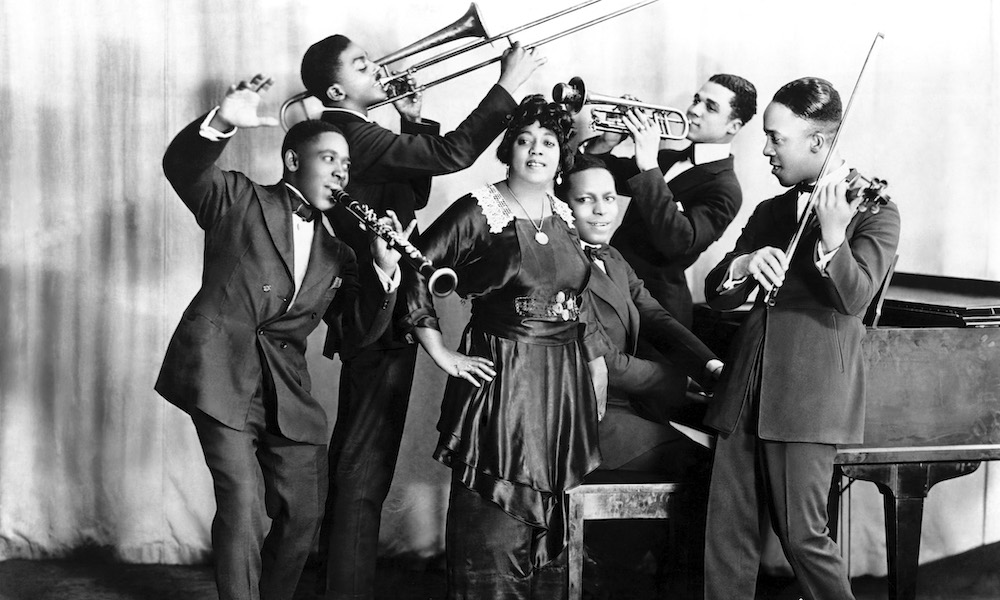We will never know who wrote the first blues song. And even using the term “wrote” is a misnomer. What is absolutely certain is that no one actually wrote it: The blues developed through the complex oral tradition of African music, and developed rapidly during the last 40 years of the 19th century.
The rise of the spiritual is relatively easy to follow, given the organized way in which the Church went about its business. The passing on of “folk music,” and in a sense the blues are folk music, is a complex process. Without TV, radio, CDs, records, tapes, or any other process for hearing recorded music, it was spread literally by word of mouth.
It’s hardly surprising that songs got changed, altered, and “improved” upon as they made their journey through America. Naturally, this process was nowhere more piecemeal than in the countryside. Devoid of theatres or other places to hear music, the role of itinerant musician and collective singing in the family or other groups was the way in which people heard or learned new songs.
In her wonderful book, On The Trail of Negro Folk Songs, written in 1925, Dorothy Scarborough, the daughter of a Texan District Judge, writes that “folk-songs are shy elusive things. If you wish to capture them, you have to steal up behind them, unbeknownst, and sprinkle salt on their tails.” Fanciful, yes, but the truth is that many Black people, who sang their songs in the country, would have been reluctant and possibly even frightened to sing their songs for white people.
The lack of any recording machinery is the reason for our lack of knowledge. It was also an age when people were less interested than we’ve become about such things. Life, then, was about survival and hard work. The notion that people, outside your immediate locality, or even country, would be interested in what you were singing was unimaginable.
The first blues record
In 1912, when W.C. Handy published “Memphis Blues,” the fad for using the word blues was already several years old. Handy’s tune was in fact the third to use the word in the title. Hart Wand’s “Dallas Blues” has the distinction of being the first, while the second was Arthur Seals’s “Baby Seals’ Blues.”
During the afternoon of Tuesday, August 10, 1920, clarinetist Johnny Dunn, trombone player Dope Andrews, clarinetist Ernest Elliott, Leroy Parker on violin, and Pianist Perry Bradford, a group of musicians collectively known as The Jazz Hounds were in the studio. They were about to play a song written by Perry Bradford, and to sing it with them was Mamie Smith. Called “Crazy Blues,” it is the first blues record.
Smith was not specifically a blues singer, but more a vaudeville and cabaret singer. Then again, at this time, there was no such thing as a blues singer. Smith was around 37 years old when she made history; certainly no youngster. Mamie had met Bradford in 1918 while she worked in his musical revue, Made in Harlem, at the Lincoln Theatre in New York. She had already recorded for OKeh in February 1920, but her two earlier efforts were not blues songs.
“Crazy Blues” sold well; some claim 75,000 copies were sold in the first month, and a million in the first year. These numbers may well be inflated, but there is no underestimating its importance, nor the fact that it was a sizeable hit. Over the next three years, Mamie recorded some sixty sides for the OKeh label, although much of the material was closer to vaudeville than blues.
Bert Williams
Four months before Mamie Smith recorded “Crazy Blues,” another Black artist recorded a song with blues in the title, but it was not a blues tune, it was in the vaudevillian tradition. Egbert (Bert) Williams was born in Antigua in 1875. His family moved to New York not long after his birth. Between 1912 and 1919, Bert was one of the top stars of the Ziegfield Follies. He was one of the first, and certainly one of the biggest, Black stars of the early 20th century.
April 18, 1920 recording “Unlucky Blues”, Bert Williams
Click to load video
When he recorded “Unlucky Blues” on April 18, 1920 in New York City for Columbia Records, Bert was already a veteran recording star. He cut one other side with a blues title, “Lonesome Alimony Blues” in May 1920, and while the latter merely reflected the tradition of using the word in the title, it certainly qualifies as acceptable subject matter for a blues song.
Country music
The first Black male country blues musician to get the opportunity to record did so as a guitarist, not as a singer. Sylvester Weaver from Louisville, Kentucky went to OKeh’s New York studio, sometime in late October 1923, to back Sara Martin on a couple of songs. The following month he again backed Sara, as well as recording his own material – “Guitar Blues” and “Guitar Rag”; the latter has proved inspirational to black Blues players, as well as white country musicians.
Many have suggested that Papa Charlie Jackson was the first country blues singer to record, but this is not actually the case. Two artists were before him. On October 24, 1923, in Chicago, Charles Anderson recorded three sides including “Sing ‘Em Blues” which had the same tune as “Baby Seals Blues.” Anderson went on to record a number of other sides in December 1924, including “Dirty Mistreating Blues.” Little is known of Charles Anderson, other than the fact that he also yodeled and recorded four more sides in 1928 with the jazz pianist Earl Hines that went unreleased.
Ed Andrews is the other artist. And we also know next to nothing about him. OKeh recorded Ed on one of the first field recording trips, in the spring of 1924 in Atlanta, Georgia. Compared to Sylvester Weaver, with his comparatively sophisticated style, Ed Andrews sounds like he’s fresh from a country juke joint. “Barrel House Blues” is the title of one of his only two sides.
Explore more influential blues recordings with Blues For Beginners on Spotify.



